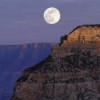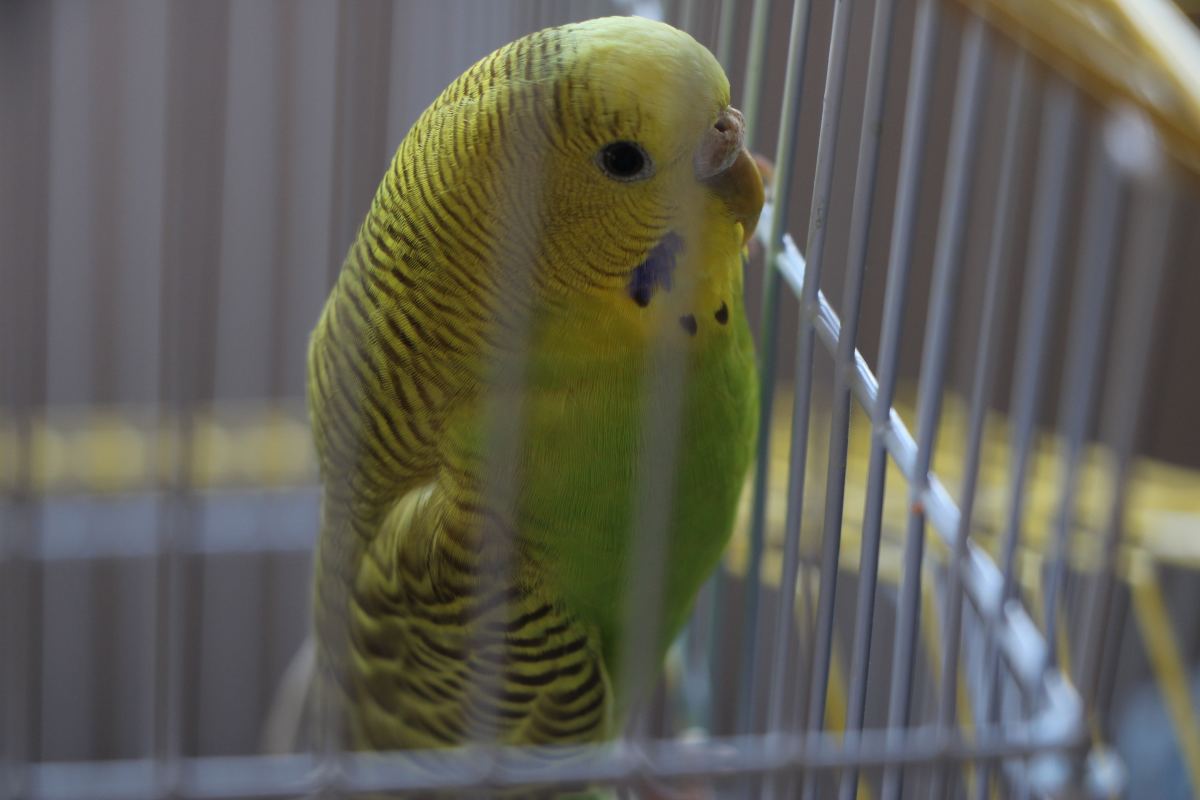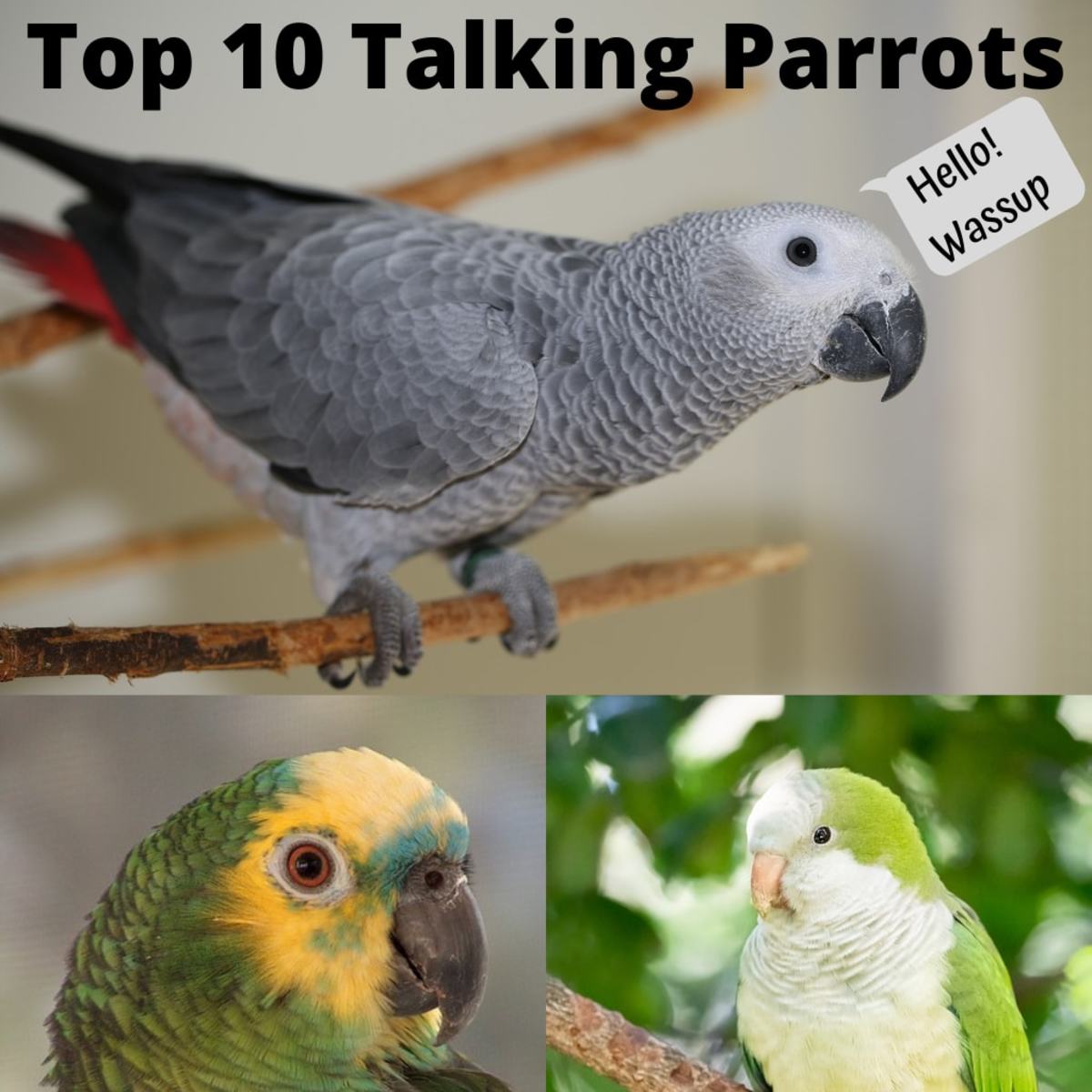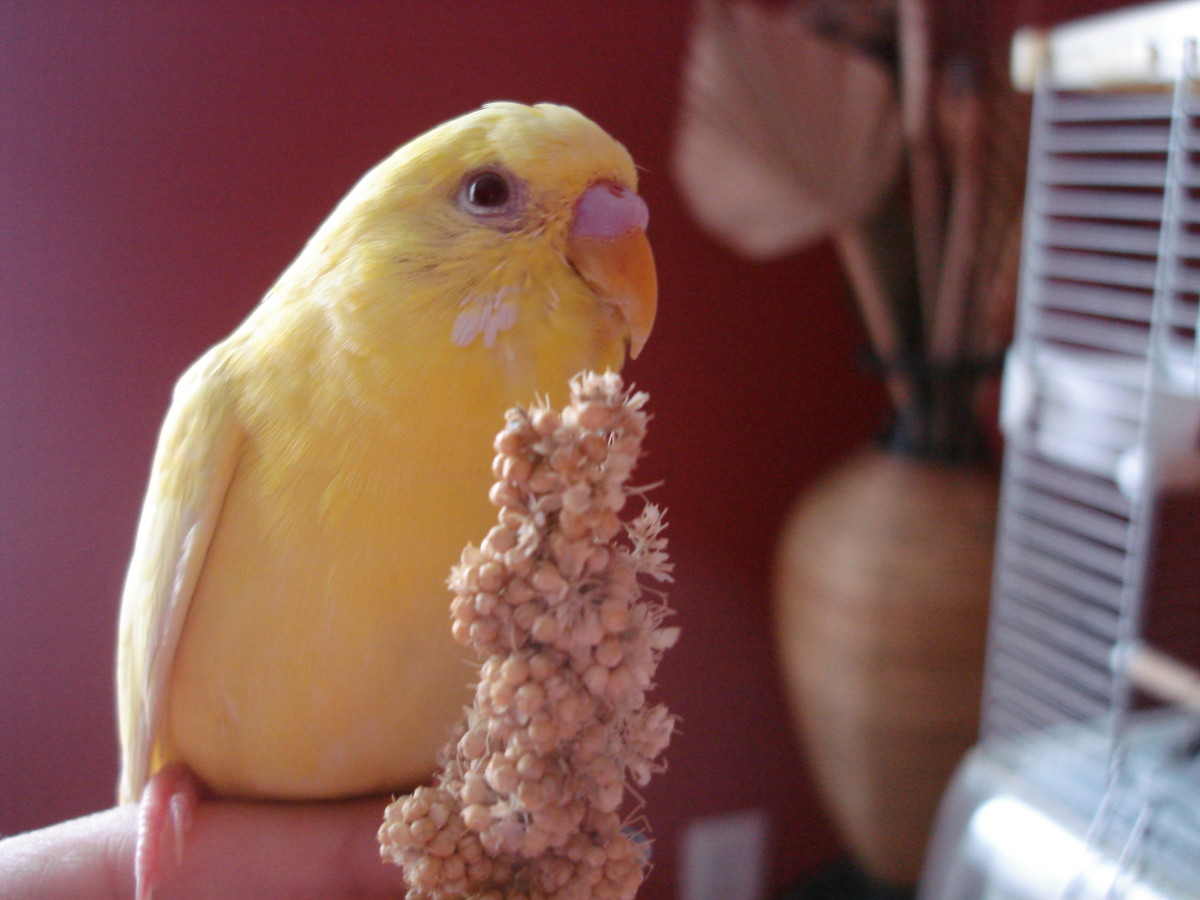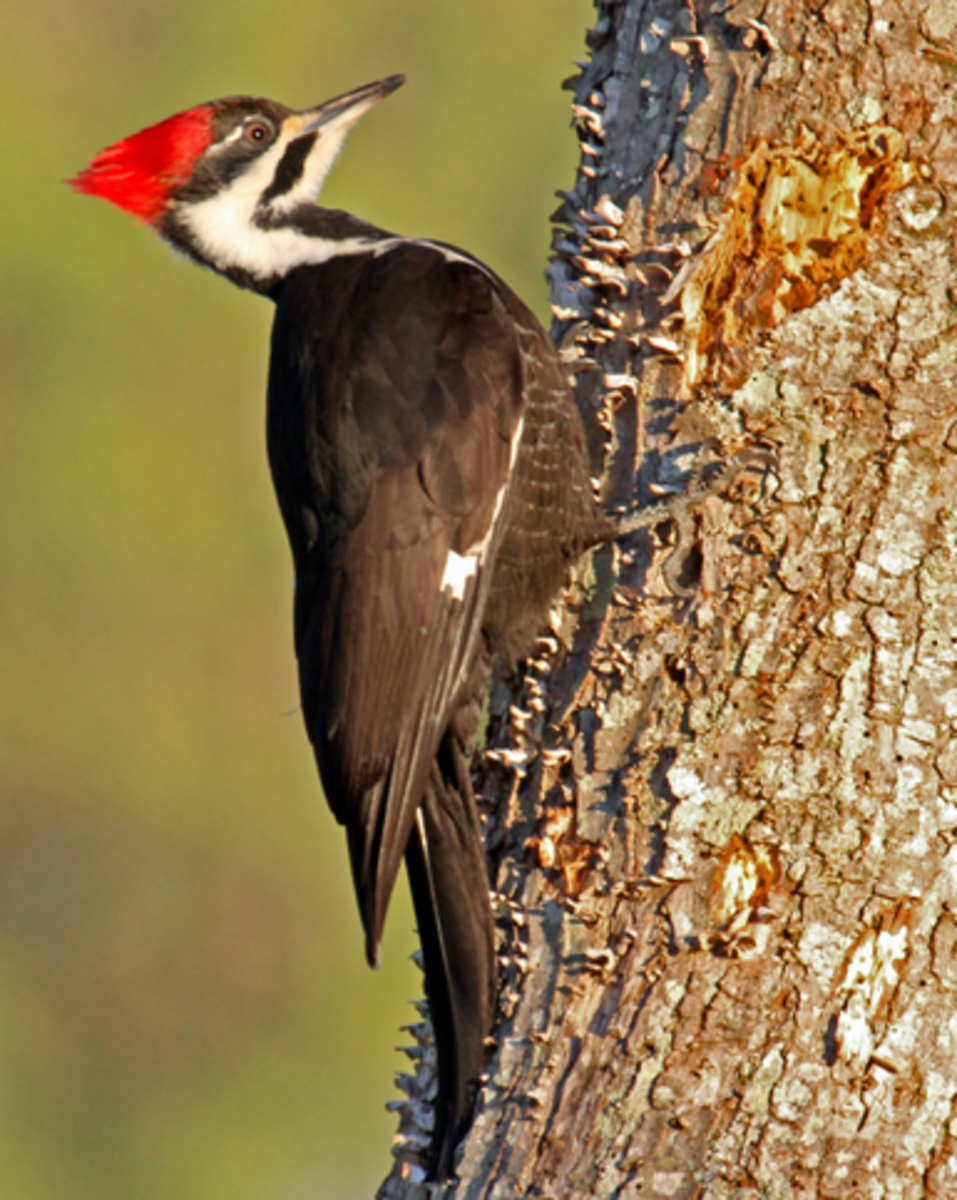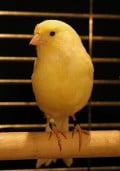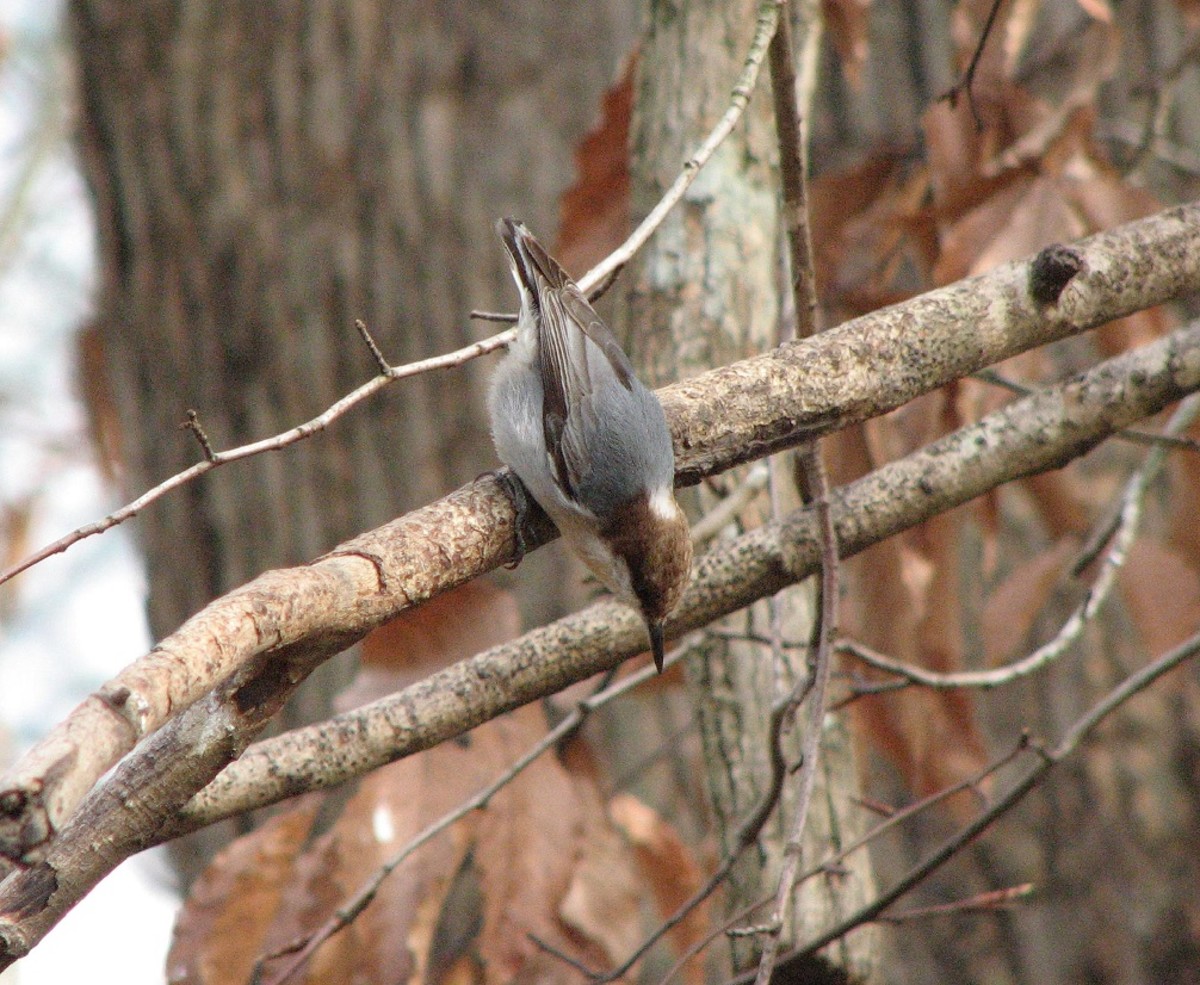America's Vanished Treasures: The Carolina Parakeet
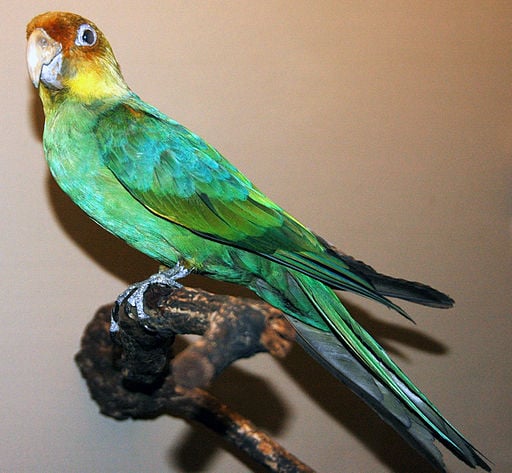
A Flash of Green and Gold
When the new land of America was first being settled by immigrants crossing the ocean, they often came across an unusual sight once they reached land, and began to explore the terrain. In a flash of green and gold, they were introduced to the most colorful bird most had ever seen. This beautiful species was the Carolina Parakeet, which most visitors to the new world referred to as paroquets. The birds were noisy and unperturbed by human intrusion, which would eventually be their downfall. The newcomers to this new world were fascinated by these rather unique birds.
Many books, journals, and diaries from America's first 100 plus years mention them with amazement and wonder. They seemed to adjust to colder weather rather well, and a few reports noted seeing numerous green and gold parakeets alighting on a snow covered tree, suddenly bring a bleak white landscape to colorful life. However the beautiful plumage also guaranteed that sportsmen and collectors would prize the birds as well.
The Carolina Parakeet became a favored target for hunters, and as the 20th century dawned their numbers were almost exhausted. When many farmers joined in the slaughter, blaming the parakeets for wanton damage on their crops, their fate was may have been sealed.

The Carolina Parakeet: Habits and History
The Carolina Parakeet was a native of the old forests in the new world. They were not an introduced species like other parrots and parakeets. They flocked together in the hundreds, and were active, colorful, and noisy. The birds ate seeds, and fruits such as grapes and apples.
The parakeet was a specialist in one aspect however. They feasted on cockleburs, which are toxic to most creatures. Many animals sicken and die after eating the poisonous plant. The parakeets didn't seem to have any difficulty in eating the invasive cocklebur though. Quite the contrary, they would voraciously enjoy them, until there were no more to consume. Unfortunately they also enjoyed the bounty of farmers all along their range, eating their fill of crops like corn.
When settlers began clearing forests along the east coast in the early 19th century, the Carolina Parakeet was drastically affected. As early as 1832, John James Audubon noted their scarcity, and many of the reports after this date commented on the fact that the bird was becoming very difficult to find. Their last strongholds were in the remaining old-growth forests in Florida and South Carolina.
The decline of the carolina parakeet brought out even more people hunting them to add a specimen to their collection before they were gone. Unfortunately the bird had a unusual habit of flocking around birds that had been shot, concerned with it's well being, allowing hunters to shoot even more of them. As they became rarer and rarer, sportsmen and poachers stepped up their efforts to claim their prize before it disappeared.
The final mystery of the Carolina Parakeet happened in the late 1890's, where there seemed to be strong, and even growing flocks in their southern strongholds (especially in Florida). By this point, shooting the birds was at least somewhat discouraged, and ornithologists has some hope that the parakeet could thrive and expand in their now limited range. However by 1904, the parakeets had vanished. And we are not exactly sure why. One ornithologist speculated that the birds fell victim to poultry disease, but there is little evidence to support that theory. Either way the Carolina Parakeet was gone, except for the birds that were in zoos and private collections.
By 1910 they were thought to be extinct in the wild, and the last known live specimen died in the Cincinnati Zoo in 1918 to little fanfare. Martha, the last Passenger Pigeon had also called the Cincinnati Zoo it's home until it's death in 1914.
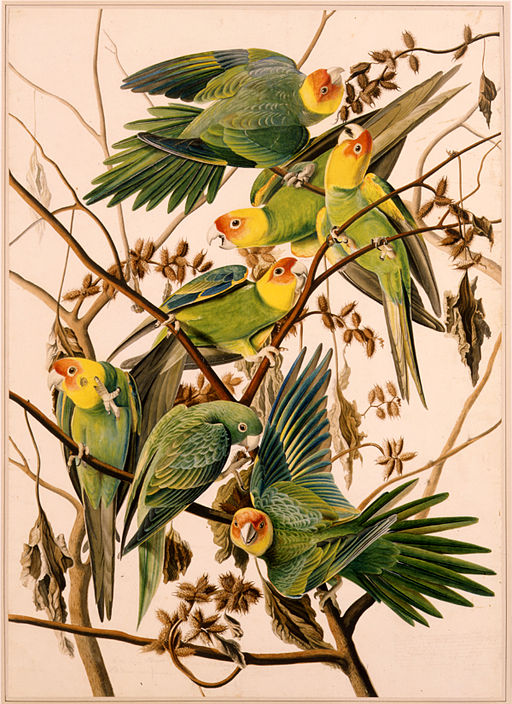
The Last Sightings
Sporadic sightings did continue in former hotspots where the bird was once plentiful, especially in South Carolina and Florida for a few decades after, but with no proof besides the sightings, scientists were skeptical. In 1934, George Malanphy, a trusted field observer who had studied at Cornell University, went deep into the Santee wilderness in South Carolina. Malanphy was there to study wild turkeys which were his specialty. after spending an entire summer deep in the swamp, Malanphy emerged with a story to tell.
He contacted two experts from the Audobon Society, noting that he had spotted two extinct species, the Ivory Billed Woodpecker, and the Carolina Parakeet. The Audobon Society leased a cabin in the swamp, and sent two veteran observers to see for themselves. The men came out of the Santee area claiming to have also seen Carolina Parakeets (no Ivory Billed Woodpeckers though). Future expeditions however saw nothing out of the ordinary.
An intriguing final sighting possibly happened in 1937, in the Okefenokee Swamp in Georgia, however ornithologists studied the film they brought back, and decided that what was caught on celluloid was feral parakeets who had escaped into the wild. Whether these were the final remnants of a small pocket of Carolina Parakeets is unknown.
Cloning the Carolina Parakeet
Some scientists have noted that with advances in technology, it could be possible in the near future to clone extinct species, and reintroduce them to their former habitat. It wouldn't be the exact same animal, since on long dead species like the Carolina Parakeet, we do not have all the DNA from live cells. However if the researchers can get the most important parts of the DNA; i.e., what made the Carolina Parakeet unique, then they can “fill in the blanks” as it were with other close related species.
While it would certainly be a fantastic sight to see Carolina Parakeets in our skies again (not to mention Passenger Pigeons, and Ivory Billed Woodpeckers), it's certainly not helpful if the reintroduced birds became invasive and began out-competing current species inhabiting the areas for resources, even possibly bringing other animals and birds to the brink of extinction themselves.
Either way, right now that potential issue is not in the near future. It is sad to think that if our forefathers had fought a little harder to curb the destruction of the Carolina Parakeets natural habitat, and perhaps carving out out a few small sanctuaries in a state or two, we might still have this beautiful bird in America today.
Lost Animals- Carolina Parakeet
Resources
Cokinos, C. (2009)- Hope is a Thing with Feathers: A Personal Chronicle of Vanished Birds: TarcherPerigee; Reprint edition (May 14, 2009)
Laycock, G (1975)- The Parakeet Mystery: South Carolina Wildlife Magazine May/June 1975
http://johnjames.audubon.org/last-carolina-parakeet
https://www.audubon.org/news/what-would-happen-if-we-brought-birds-back-dead
https://en.wikipedia.org/wiki/Carolina_parakeet
https://www.popsci.com/de-extinction-long-live-mammoth
